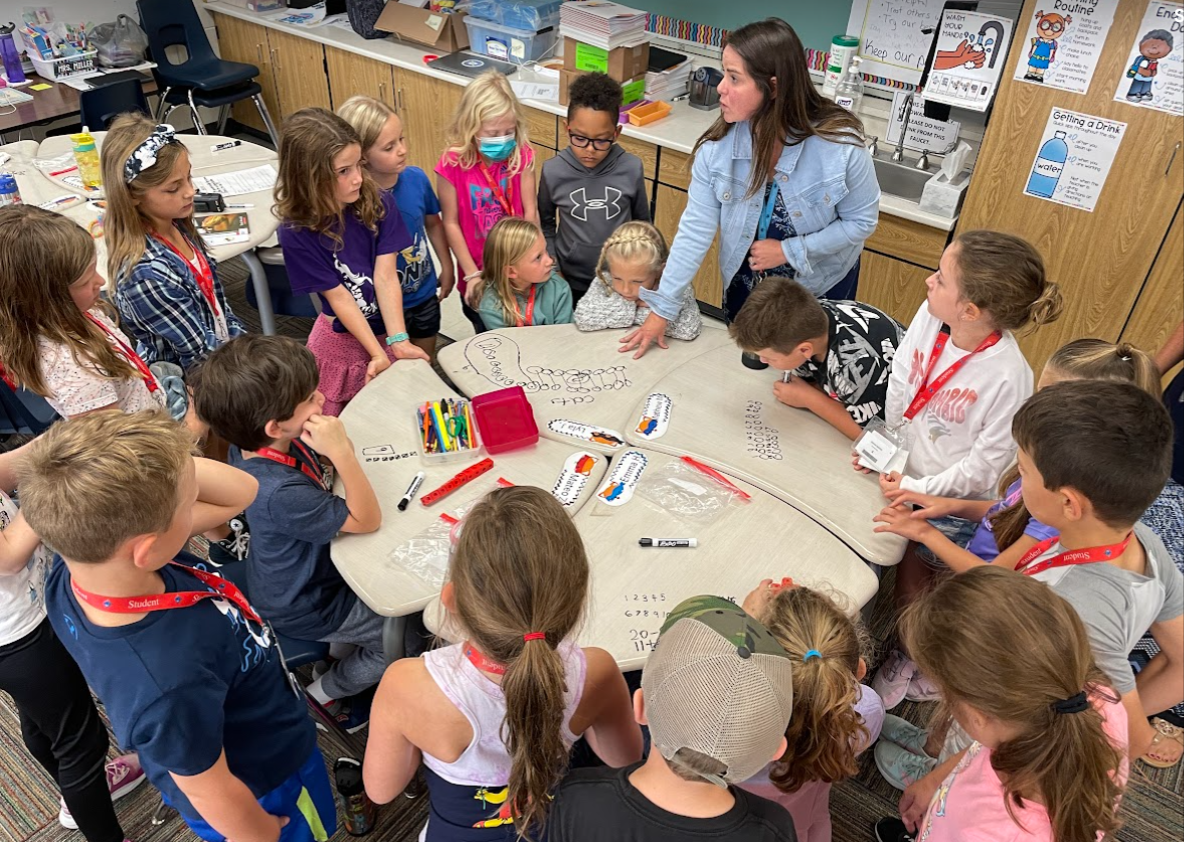“Creating a Math Space That Puts Students at the Center”
Is Your Math Classroom Ready for Student-Centered Learning?
Take a moment and picture yourself walking into a math classroom.
What do you see?
What do you hear?
How does it feel?
These are powerful questions to reflect on as you prepare your learning space for students. Gone are the days when math instruction was quiet, rigid, and solitary. We now understand that learning mathematics is not just about finding the right answer—it's about thinking deeply, making sense of problems, analyzing, explaining, arguing, and constructing understanding alongside others.
To support this kind of rich learning, the classroom environment must be intentionally designed.
That’s why I created a free planning guide to help teachers set up a student-centered math classroom. It walks you through key areas to consider before the first day of school—so you can create a space where students feel seen, supported, and successful.
Below, I’ve highlighted a few of the guiding questions from the tool and explained how they can support your setup:
🪑 Desk Arrangement
In a student-centered environment, collaboration is key. Students need to make eye contact, share ideas and strategies, and feel at ease. Consider grouping desks or tables in clusters of 3–4 to support conversation and shared work.
Also think beyond just desk placement.
Can students easily move around the room?
Are there flexible spaces to stand or sit while working on tasks?
Movement and comfort are essential for engagement.
🧮 Math Tools
Where will your math tools “live”? Will they be:
Organized in a central location, clearly labeled?
Stored at student desks or behind chairs?
Freely accessible or only used with permission?
Whatever system you choose, make expectations clear. Students should feel confident grabbing what they need, when they need it—without interrupting the flow of learning.
And remember: your system might evolve throughout the year. That’s okay. The goal is access and clarity.
📍 Locations for Lesson Components
While every math curriculum is different, most include consistent elements like:
A warm-up or instructional routine
A core task or activity
A wrap-up or formative check
Think about where each part will happen. For example:
Whole-group conversations may take place on the carpet or in a circle where students can turn and talk.
Small-group work could happen at tables or around the room in flexible spots.
Independent tasks might benefit from quieter zones.
Changing spaces throughout the lesson keeps students engaged and supports different learning needs.
📋 Data Collection
In a student-centered classroom, the learning is about process, not just product. That’s why it’s important to have a system to track what you notice—how students are thinking, what strategies they’re trying, and how their understanding is growing.
Whether you prefer paper or digital tools, consider:
How will you take anecdotal notes during lessons?
Where will you record observations?
How will you track growth over time?
I’ll be sharing free tools and templates for data collection soon—stay tuned!
🎲 Organizing Centers & Games
If your math block includes centers or games, organization will make or break the experience. Set them up so students can jump right in, without needing constant direction.
Here are a few tried-and-true options:
Manila folders with materials inside
Labeled bins for each game
File crates with folders for each center
Hanging storage pockets with clear labels
The more seamless the transition, the more time kids spend doing math—not figuring out logistics.
As you think through your classroom setup, what are you most excited about?
Creating a space that supports student voice, movement, collaboration, and access to tools will make a big impact—not just on day one, but all year long. With a thoughtful setup and a student-centered mindset, you’re laying the foundation for meaningful, joyful math learning.



